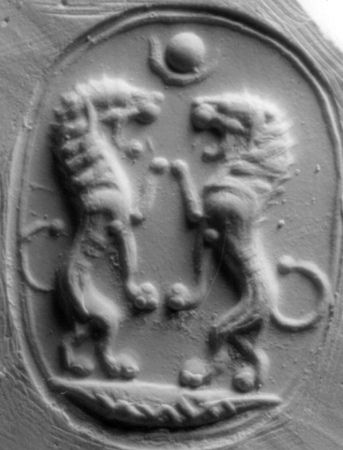 This etude is a study in that the ballade, 'Pymalion qui moult subtilz estoit,' (F. 113 of Torino J.II.9) serves as a source for the pitch and rhythmic material, but also in that it is a study in the project of adoption, in the thorough engagement with the exquisite foreignness of the past. The text recounts the tale of Pygmalion the sculptor, averse to women, whose consuming love for his own statue leads to the intercession of Aphrodite, and the statue's transformation from idealized female form to flesh and life. The Cypriot source of the Torino codex places the character of Pygmalion in an intriguing political and historical frame, as Pygmalion is most often presented as a king of Cyprus– the situation of Nicosia as a crusader state on the interface between Christendom and Islam draws intriguing connection between political and socio-cultural transformation of the island of Cyprus, the biophysical transformation of the statue, and psychological and emotional transformation of Pygmalion himself. In this etude, the original musical work is sometimes presented relatively directly, sometimes refracted through the compositional concerns of the early 21st century– the relationship between derived work and the original metaphorically mapping both the loss and accrual of significance through time as well as the sculptural working of the titular artist-king.
This etude is a study in that the ballade, 'Pymalion qui moult subtilz estoit,' (F. 113 of Torino J.II.9) serves as a source for the pitch and rhythmic material, but also in that it is a study in the project of adoption, in the thorough engagement with the exquisite foreignness of the past. The text recounts the tale of Pygmalion the sculptor, averse to women, whose consuming love for his own statue leads to the intercession of Aphrodite, and the statue's transformation from idealized female form to flesh and life. The Cypriot source of the Torino codex places the character of Pygmalion in an intriguing political and historical frame, as Pygmalion is most often presented as a king of Cyprus– the situation of Nicosia as a crusader state on the interface between Christendom and Islam draws intriguing connection between political and socio-cultural transformation of the island of Cyprus, the biophysical transformation of the statue, and psychological and emotional transformation of Pygmalion himself. In this etude, the original musical work is sometimes presented relatively directly, sometimes refracted through the compositional concerns of the early 21st century– the relationship between derived work and the original metaphorically mapping both the loss and accrual of significance through time as well as the sculptural working of the titular artist-king. To compose is always to speak with the dead, but further, it is to dance with them, to embrace the past as immediate, even if it is remote. F. 113 is transported in time, gaining and loosing distinct fidelities. It is the same as it ever was, and yet it is as it has never been. Stone is carved and wears; clay is spun and shatters – A friend suggests that the first time around, we worked in clay and stone, and this time we work in light, light fixed and transfixed in copper and glass, sand that was once the beach of Pygmalion's Cyprus, of Lusignan Nicosia. For music in this age of light, the invitation to dance must come from us – the dead await and welcome, but only come when called – they have learned not to speak first. If our aspiration is a sublime recapitulation we will always be disappointed. Our dialogue with history is always precisely that, a dialogue, a conversation which moves both partners to places unplanned. Like Pygmalion, the transformation is double– the statue comes to life, but Pygmalion's relations to others are also transformed. We transform what we adopt, and are transformed in the process. The difficulty is loving the source, the transformed and the process, to adopt and not to merely borrow.
Or, perhaps more simply, imagine this: a reed brushes against a potter's wheel in the kingdom of Nicosia in the early part of the 15th century, its vibrations translating the sound waves of musicians in the next room into grooves and valley on the surface of a rotating pot. Half a millennium later another miracle, more technical perhaps, allows the reconstitution of those patterns into sound. Tonight we hear such a doubly miraculous retransmission, not with the flaws and degradations of an imperfect recording, but with the amendments of history and all its generative imperfections.